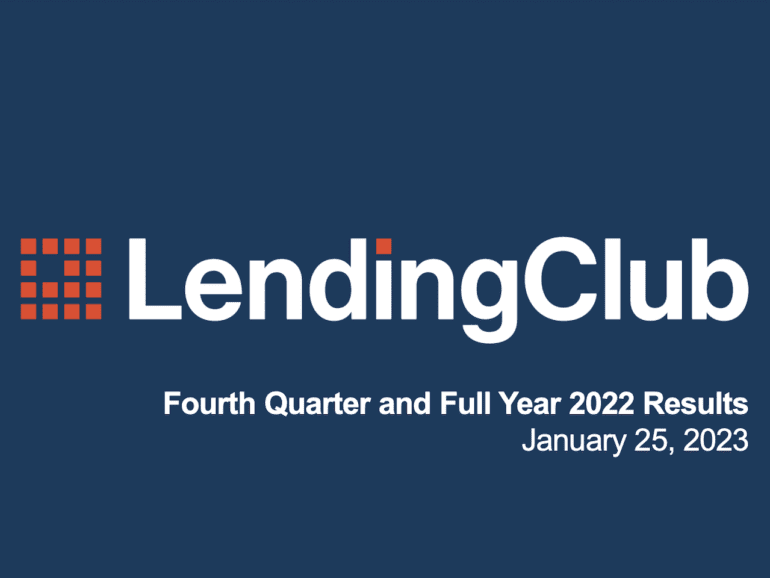Following a year that eventually led to a cut of 14% of their workforce, it was perhaps unsurprising that LendingClub referenced the challenging conditions in their Q4 2022 earnings call.
The company continued to see net revenue growth despite the ongoing macroeconomic difficulties.
“We closed out 2022 With solid results,” said Scott Sanborn, CEO of LendingClub, in the opening remarks. “Both revenue and earnings were near the high end of our guidance range. And importantly, we took action to position the company well to navigate current headwinds.”

“For the full year, we generated 45% revenue growth and a record 290 million net income.”
Deposits had also grown by 104% YOY, and the company had scaled the online banking platform acquired in early 2021.
However, loan originations were down. Drew LaBenne, CFO of LendingClub, commented that total revenue had remained flat due to an offset created by the 29% decline in non-interesting revenue due to this drop in originations.
Marketplace revenue was also hit and saw a reduction of $47.2 million between 2021 and 2022. The company stated the drop was due to the pace of Federal Reserve interest rate increases and tighter underwriting standards implemented by the company.
Looking Forward
Sanborn took a favorable position looking forward, stating that the company will focus on what they “can control” amid an uncertain economy.
The focus will be split into three areas.
- “Continuing to manage credit quality through the cycle prudently.” – Sanborn stated that he felt focusing on quality rather than quantity was vital for the company to navigate forward. He explained that the rate environment had continued to put pressure on the marketplace volumes and, as a result, restricted the relative value the company has provided. He noted that the company’s delinquencies had performed above market average due to their cautious underwriting approach.
- “Preserving profitability and maintaining a strong balance sheet.” – Sanborn mentioned the recent “streamlining of operations” and cut expenses. In addition, he explained that the acquisition of an additional extensive portfolio of “high-quality seasoned loans” had bolstered the company’s net interest income.
- “Being practical and focused in our products and technology investments.” – Sanborn explained that the company was slowing down on investment going into 2023 due to the macroeconomic conditions. However, he assured that the company would focus on “putting the building blocks in place” for future investment opportunities in the year ahead.
In light of the ongoing macroeconomic storm, the guidance for Q1 2023 was cautious but positioned to maintain a trajectory along the three focus points.
The provision for credit losses going into the new year has been set at $62 million, $21 million lower than Q4 2022. LaBenne stated that this was “primarily due to a decrease in the dollar amount of loan originations held on the balance sheet.”
Pre-provision revenue was set between $55-$70 million, lower than the amount seen in Q4 for both 2022 and 2021, despite a growth of 12% between the two years.
Guidance for total originations was set between $1.9-$2.2 billion, with the company maintaining its underwriting strategy and focus towards “quality over quantity.”
RELATED: Fintech Ticker Table


